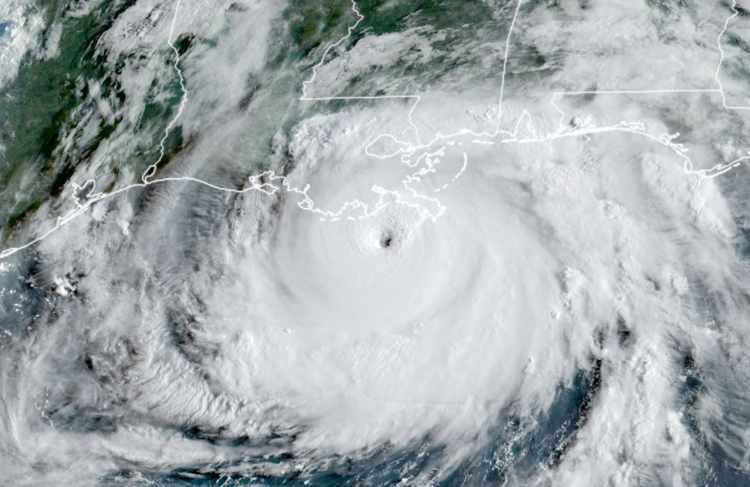While hurricane activity may be higher, offsets can support performance: Morgan Stanley

While forecasts for the 2024 Atlantic hurricane season suggest a particularly active few months ahead, in comments on the reinsurance market that read-across to insurance-linked securities (ILS) strategies, analysts at Morgan Stanley believe that this year there are some offsets in place that can support performance.
Of course, it’s important to note, that a single major hurricane loss event could send the vast majority of ILS fund strategies heading towards negative territory.
But, as we’ve been saying for months now, the reinsurance sector and ILS funds are in a far better position to weather the effects of hurricanes, than they were just a couple of years ago.
The hurricane season could be a headwind for reinsurance companies, Morgan Stanley’s analyst team note.
But, they highlight a number of offsets to that, which are the factors that have not been in place in the past, but are now able to support performance, to a degree at least, through catastrophe losses in 2024.
The first of these is disciplined underwriting and tighter terms and conditions, which the analysts note can “help mitigate some of the risks of an active hurricane season.”
To us, this is the key change since two years ago and prior, with the higher attachment points and reduction in aggregate limit deployment being the two most significant in the catastrophe bond and ILS fund space.
Because of the new reality of higher attachments and more single-shot occurrence covers pervading the ILS market’s capital deployment, strategies are in a much better position to whether the smaller to moderate industry loss events that might occur through an active hurricane season.
Another factor the Morgan Stanley analyst team highlight is pricing.
They believe that while reinsurance pricing is likely to come down by around the mid-single digit mark through the full mid-year renewals, it should still be relatively stable given the discipline and lack of appetite still being shown lower down the risk tower.
This is especially the case in the ILS market, where many still shy away from anything lower down and the cat bond market remains elevated at around the 1-in-50 year level, or thereabouts in the main.
In addition, “higher capital in the top layer is offset by general reinsurance discipline and tight terms and conditions,” the analysts add.
The last of the factors the Morgan Stanley analyst team point to as a mitigating influence on cat losses this year, is really meant just for the traditional reinsurance side, but we feel also reads-across positively.
The fact investment returns remain robust given the higher-for-longer rate environment, which will buoy reinsurer investment returns and can help to offset the impacts of losses on the other side of their balance-sheets.
But this is also a positive for cat bond and most ILS investors, as being floating-rate instruments, the majority of ILS arrangements will still be delivering a risk-free rate of return up at around the 5% mark, which can act as another buffer for performance when catastrophe losses do strike.
Because of the way the market has moved so far this year and the growth being seen in catastrophe bonds, the Morgan Stanley analysts say, “We believe the supply of capital should be higher than the past, while demand continues to hold up.”
Strong profitability in reinsurance and strong ILS market returns are attracting capital and this should moderate pricing, the analysts believe, which they see as positive for insurers.
But, they don’t expect a rapid softening and instead anticipate discipline remaining in place, at least through the hurricane season.
Terms are staying tight at the mid-year, which gives the analysts confidence in the buffer those provide against losses, while rates are still far higher than just a few years ago.
“While we see more capital in the higher layers, lower layers pricing continue to be disciplined,” the analysts explained.
At the same time, they expect that, “The severe weather expectation is supporting the overall property CAT pricing,” while in addition the, “Rising cost of the risk environment should serve as an upward pressure longer term.”
2024 is not as clear-cut a market as we’ve seen in the past, where we could point to capital inflows and confidently predict persistent reinsurance rate softening was ahead.
There are a lot of factors to consider now and reinsurers and ILS funds are both showing the kind of discipline so far that had been unfortunately absent from the renewal markets pre-2019.
Of course, a benign hurricane season could open the capital floodgates, effecting a faster softening environment. But still, our sources suggest the motivation is to demonstrate to shareholders and investors that the market can deliver on its return promises, on both the traditional and alternative sides.
Time will tell, just how disciplined people will be, or whether those competitive tendencies emerge in time.
This is especially true of those that have, the past and again this time, been late to grow into the hardening market and nearly always tend to grow fastest into the early phases of softening, chasing rate down (those in the market for long enough will know what we mean).






